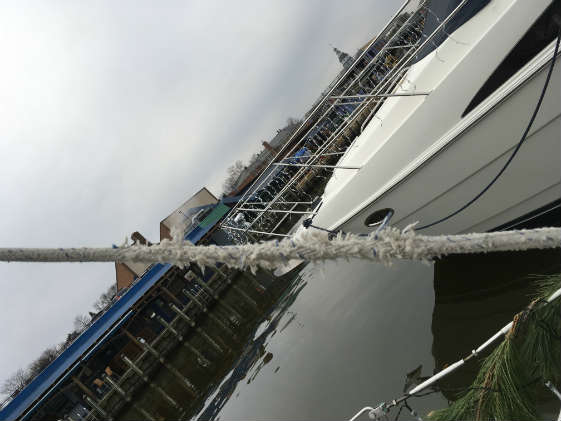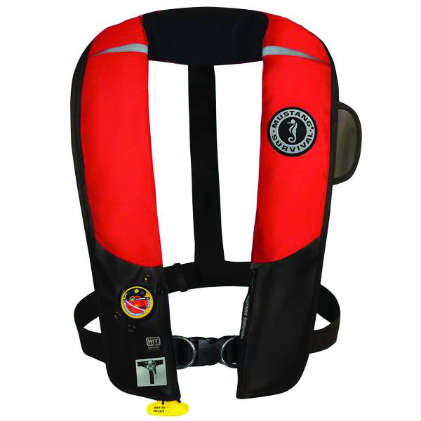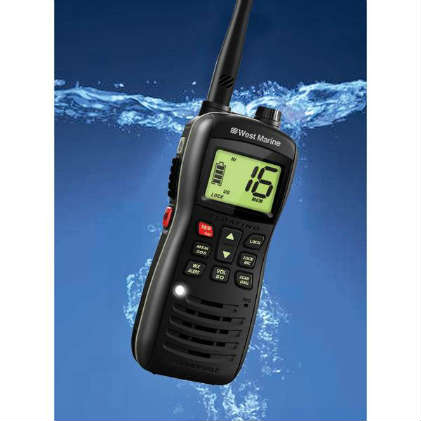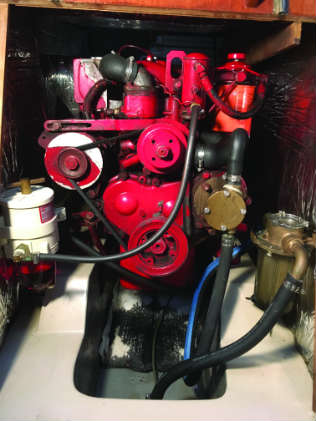Coping with an Accident in Waiting - 10 Suggestions: Here’s a fresh approach to boating safety: think of your boat as an accident-in-waiting.

Sound a little extreme? Yes, but it’s a good way to start out. As rewarding as all of us find getting out on the water, boating is inherently dangerous. If you’re like most people, until you begin taking those dangers seriously, you may be blasé about doing what’s needed to minimize those hazards and prevent injuries—or even deaths. And you’re likely risking serious trouble.
Consider what you’re up against. Your boat is made of flammable fiberglass. It contains combustible fuel, an electrical system that can spark an onboard blaze, and opportunities for potentially serious leaks. You face the possibility of dangerous storms, lightning strikes, and heavy seas, and the risk of collision. On top of that, there’s the possibility of sinking.

To be sure, most boats have some devices and equipment designed to help reduce these risks. There are fire-extinguishers, bilge pumps, ventilation systems, backfire flame arresters, life jackets, distress signals, lifelines, VHF-FM marine radios, chartplotters, AIS transponders, and depth-finders, to name a few. Together, they make boating seem relatively safe.
But here’s the hitch: too many boaters, comforted by that reassurance, don’t pay enough attention to safety considerations. They don’t maintain their vessels properly, don’t carry adequate safety equipment, don’t inspect or maintain it sufficiently, and don’t know how to use the gear they have. Few skippers train their crews to deal with emergencies.

“Too often boaters seem to believe that as long as they have, say, a first-aid kit or a fire-extinguisher onboard, that’s all they need to do,” says Captain Alan Karpas, safety coordinator for the Annapolis-based Chesapeake Area Professional Captains Association. “You have to make sure that the gear you have is adequate and that the people onboard know how to use it.
“When you encounter serious trouble on the water, it’s likely to show up suddenly, while you’re under way,” Karpas points out. “You need to have the equipment ready, the crew trained, and the ability to deal with the problem immediately. Once you have an emergency on your hands, you’re not likely to have time to look for gear and figure out what to do with it.”
As experienced boaters know, the kind of safety equipment (and crew training) you’ll need varies widely with the type of boat you have and where you operate it. A 15-foot runabout used on sunny days on a mountain lake needs far less equipment than a 50-foot sailboat that’s about to embark on a transatlantic voyage. There are 1000 variations in between.
One place to start is to get a free vessel safety check from a member of the U.S. Power Squadrons or the U.S. Coast Guard Auxiliary. It’ll show you whether your boat meets minimum federal and state safety requirements, and you can go on from there. You’ll also want to take a Coast Guard-approved course in first aid and CPR.

Here are 10 suggestions about how to approach the safety question sensibly—and effectively—for your own boat:
- Survey your boat to see what its potential danger-points are, and compile a list of safety gear and equipment that you’re likely to need to cope with them. Don’t stop with Coast Guard requirements for items such as fire-extinguishers and distress signals. They’re only intended as minimums; you may well want to install more or better gear than what’s been prescribed.
- Keep an eye out continually for signs of wear or potential failure: shabby life jackets, oil leaks, gasoline or propane fumes, burnt insulation, fraying lines, loose stanchions or lifelines, cracks or rust in rigging or on-deck gear. Take immediate steps to repair them as soon as you see them. Don’t let your maintenance slip. Well-maintained boats are safer.
- Be sure that safety gear is installed properly and is easily accessible in case of an emergency. Many items, from fire-extinguishers and inflatable life jackets to navigational lights and anchor rodes, must be inspected and maintained regularly if you’re planning to rely on them. Start a checklist of inspection and maintenance tasks, and follow it rigorously.
- Make sure that your regular crew knows how to use this equipment and that it practices doing so by conducting periodic (or even occasional) drills. If you have guests onboard, advise them about where they should sit and how they can move about without risking injury or falling overboard. Have them wear life jackets—the way they’d buckle seat-belts in a car.
- Keeping guests or inexperienced boaters away from danger is especially important on a sailboat, where first-timers may not be familiar with the risks of unintentional gybes, sudden heeling, or the unexpected failures of rigging and lines under tension. As skipper, you need to explain these possibilities and warn guests to ask you first before they move around.
- Make an informal safety assessment before you get under way. What will the weather and sea conditions be like? Can you, your vessel, and your crew handle it? What will you need to do if an emergency arises? Who will take the helm? Man the fire-extinguishers? Deal with a leak or hull puncture? Turn off the engine? See to the guests? Call for help? You can’t do it all.
- Before you shove off, be sure you’ve checked your fuel levels, bilges, gasoline fumes, radios, fire-extinguishers, speed and depth instruments, and running lights. Check out your life jackets—especially if they’re inflatables and require a functioning charging cylinder to work properly. Break out your equipment for a crew-overboard emergency and have it accessible.
- Once you’re under way, be alert so you can spot potential dangers before they become full-blown emergencies. Smoke coming from an electric wire? Water leaking from a hose? Gasoline fumes from a bilge or fuel tank? Crew member or guest getting seasick or fatigued? Deal with the situation before it gets worse. Consider whether to head for port or call for help.
- Make sure you designate an experienced lookout to help keep tabs on other boats, big ships, buoys and daymarks, and floating debris and take a closer look (using binoculars) at shoals, landmarks, and other features. Check the weather every hour or so, either on your VHF-FM marine radio or on a local marine weather app.
- Never lose sight that operating a boat is a serious responsibility as well as an exciting challenge and a joy. The best way to keep safe on any boat is to prepare for the worst and try to anticipate dangers before they become emergencies. That means constant vigilance, and it’s the skipper’s job to make sure that’s done.
Thinking of your boat as an accident-in-waiting won’t necessarily guarantee that you won’t encounter any emergencies during the time you spend on the water. But it is apt to make mishaps less likely and make boating even more rewarding—and enjoyable—for you and your crew
~Capt. Art Pine
This is the first in a three-part series. Find the second part here.




